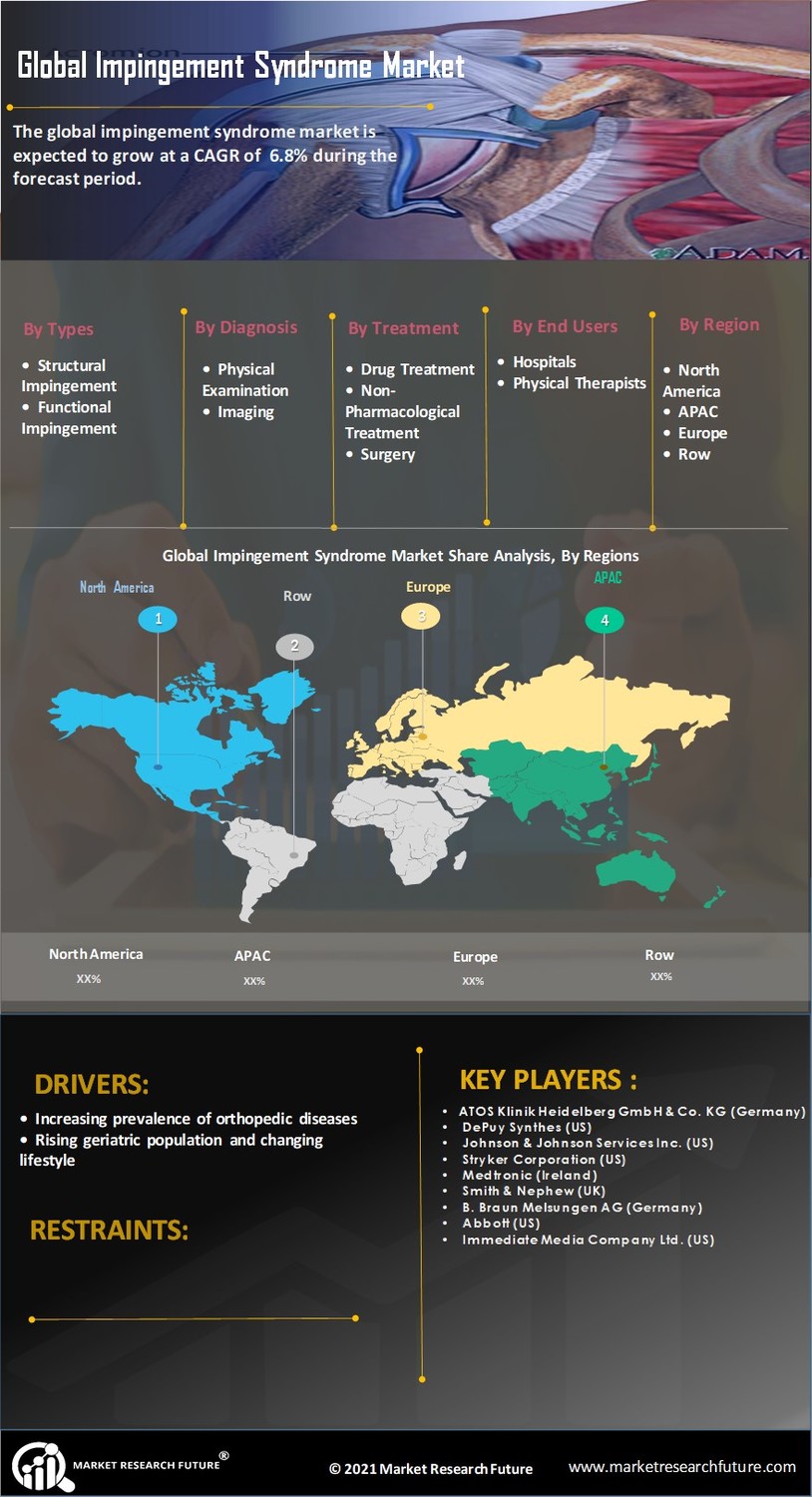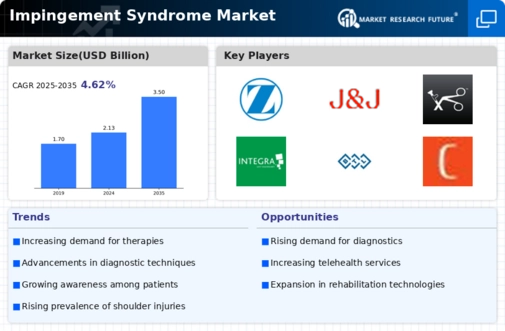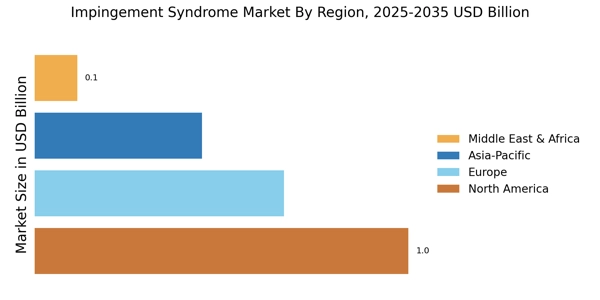Expansion of Telehealth Services
The Impingement Syndrome Market is experiencing a transformation due to the expansion of telehealth services. Telemedicine offers patients convenient access to healthcare professionals, enabling timely consultations and follow-ups for those suffering from impingement syndrome. This trend is particularly beneficial for individuals in remote or underserved areas, where access to specialized care may be limited. Recent statistics indicate that telehealth usage has surged, with many patients preferring virtual visits for non-emergency conditions. As telehealth continues to evolve, it is likely to play a crucial role in the management of impingement syndrome, facilitating early diagnosis and ongoing monitoring. This shift towards digital healthcare solutions may enhance patient engagement and adherence to treatment plans, ultimately contributing to the growth of the Impingement Syndrome Market.
Advancements in Surgical Techniques
Innovations in surgical techniques are significantly influencing the Impingement Syndrome Market. Minimally invasive procedures, such as arthroscopy, have gained traction due to their associated benefits, including reduced recovery times and lower complication rates. The introduction of advanced imaging technologies, such as 3D imaging and robotic-assisted surgery, enhances the precision of these procedures, thereby improving patient outcomes. According to recent data, the market for arthroscopic surgeries is projected to grow at a compound annual growth rate of over 5% in the coming years. This growth is indicative of a broader trend towards less invasive treatment options, which are becoming increasingly preferred by both patients and healthcare providers. As surgical techniques continue to evolve, the Impingement Syndrome Market is likely to expand in response to these advancements.
Growing Awareness of Sports Injuries
The Impingement Syndrome Market is also being propelled by the growing awareness of sports-related injuries. As participation in sports and physical activities increases, so does the incidence of shoulder injuries, including impingement syndrome. Athletes and active individuals are becoming more informed about the importance of early diagnosis and treatment, which is likely to drive demand for specialized care. Furthermore, sports organizations and healthcare providers are increasingly advocating for preventive measures and education regarding shoulder health. This heightened awareness may lead to a surge in consultations and treatments within the Impingement Syndrome Market. Additionally, the integration of sports medicine into mainstream healthcare is expected to further enhance the visibility and accessibility of treatment options for impingement syndrome.
Rising Incidence of Shoulder Disorders
The Impingement Syndrome Market is experiencing growth due to the increasing prevalence of shoulder disorders. Studies indicate that shoulder pain affects approximately 20% of the population at some point in their lives. This rising incidence is attributed to factors such as aging populations and sedentary lifestyles, which contribute to musculoskeletal issues. As more individuals seek medical attention for shoulder pain, the demand for effective treatments and interventions in the Impingement Syndrome Market is likely to rise. Furthermore, healthcare providers are becoming more aware of the need for early diagnosis and intervention, which may lead to an increase in the utilization of diagnostic imaging and therapeutic options. This trend suggests a robust market potential for both conservative and surgical treatment modalities.
Increased Focus on Rehabilitation and Physical Therapy
The Impingement Syndrome Market is witnessing a heightened emphasis on rehabilitation and physical therapy as primary treatment modalities. Evidence suggests that conservative management, including physical therapy, can be effective in alleviating symptoms and improving function in patients with impingement syndrome. As healthcare systems increasingly prioritize non-surgical interventions, the demand for physical therapy services is expected to rise. According to industry reports, the physical therapy market is anticipated to grow significantly, driven by the need for rehabilitation services for musculoskeletal conditions. This trend reflects a broader shift towards patient-centered care, where rehabilitation is viewed as a critical component of the treatment continuum. Consequently, the Impingement Syndrome Market may benefit from this focus on rehabilitation, leading to increased investment in physical therapy resources and training.


















Leave a Comment